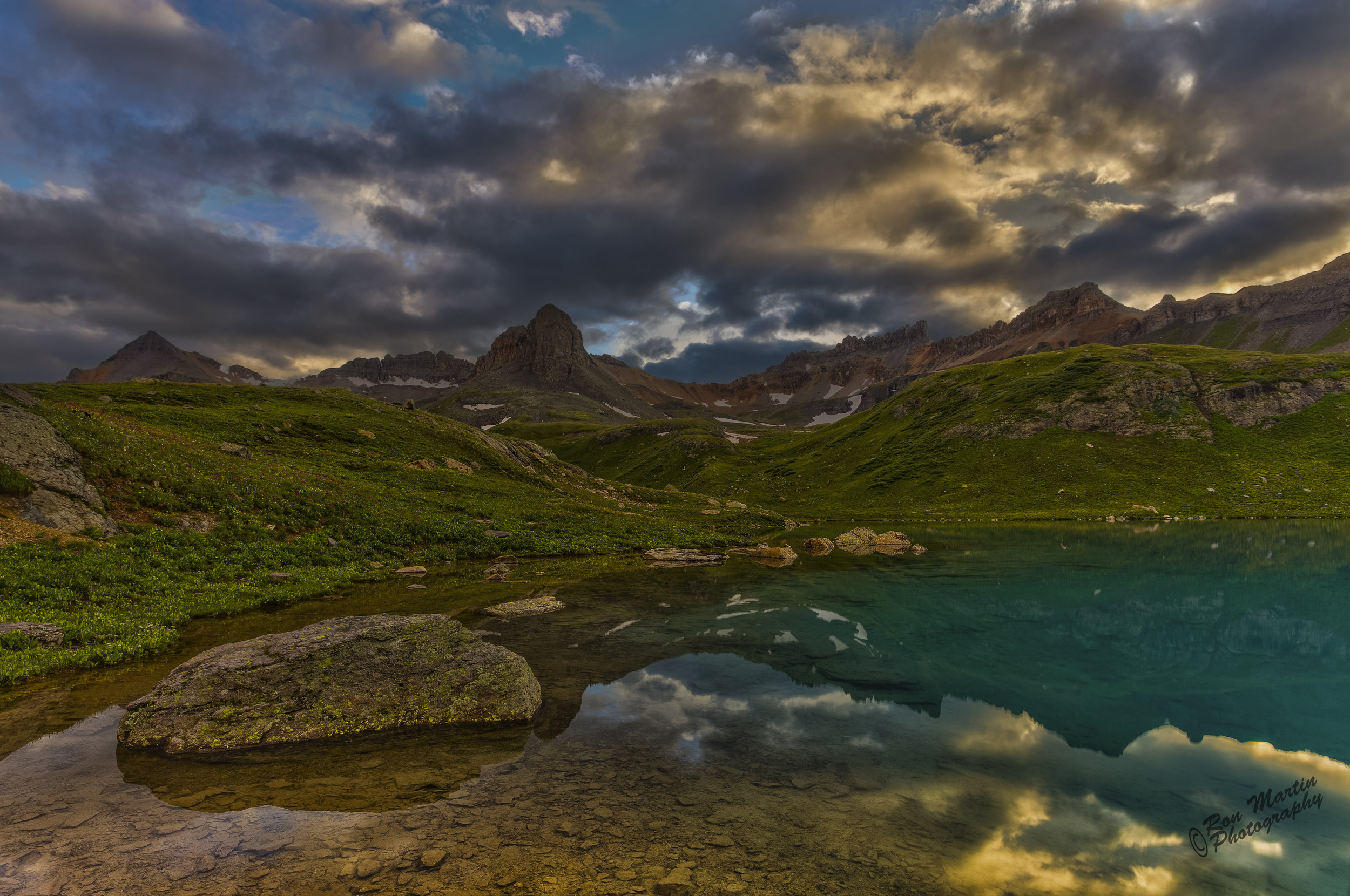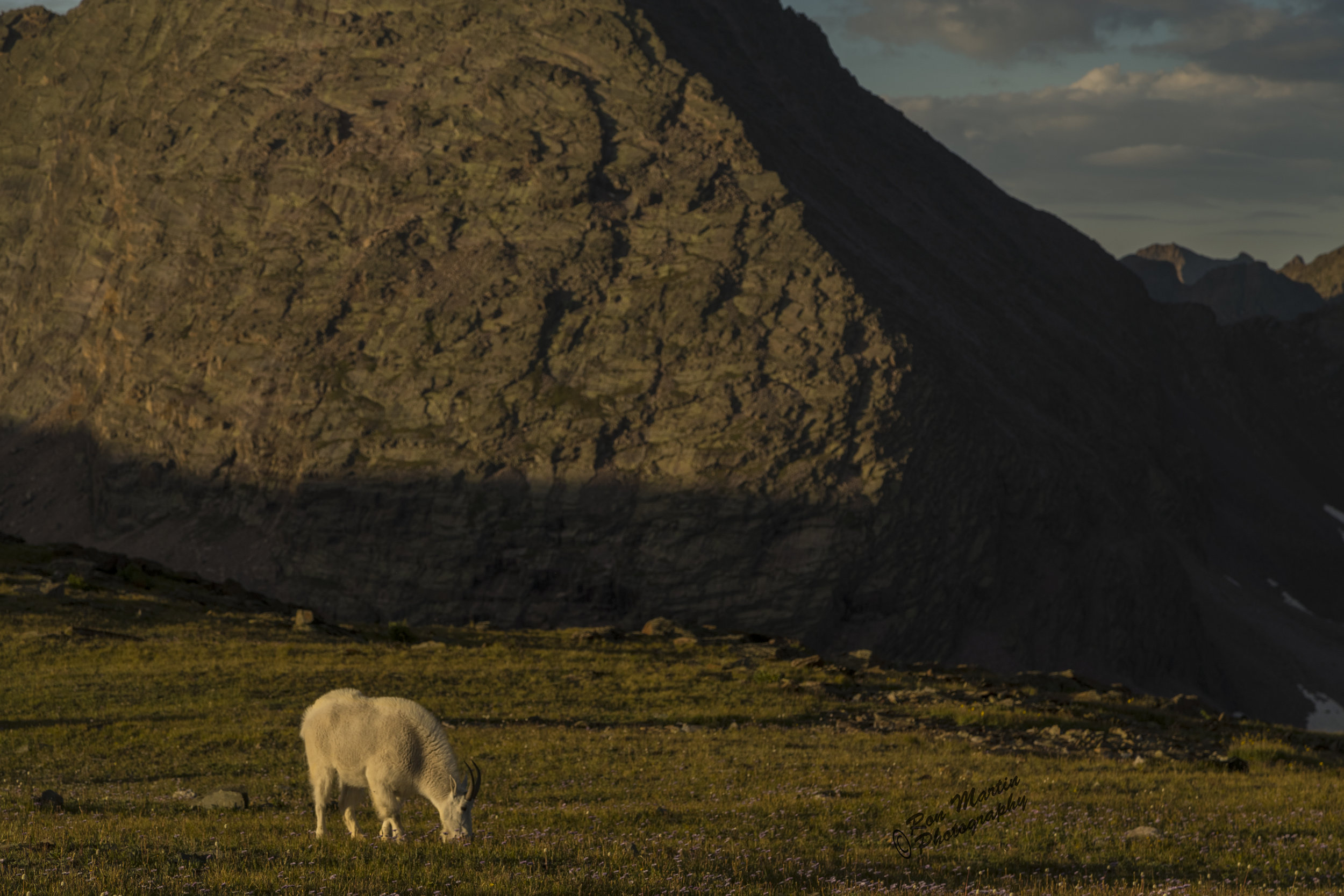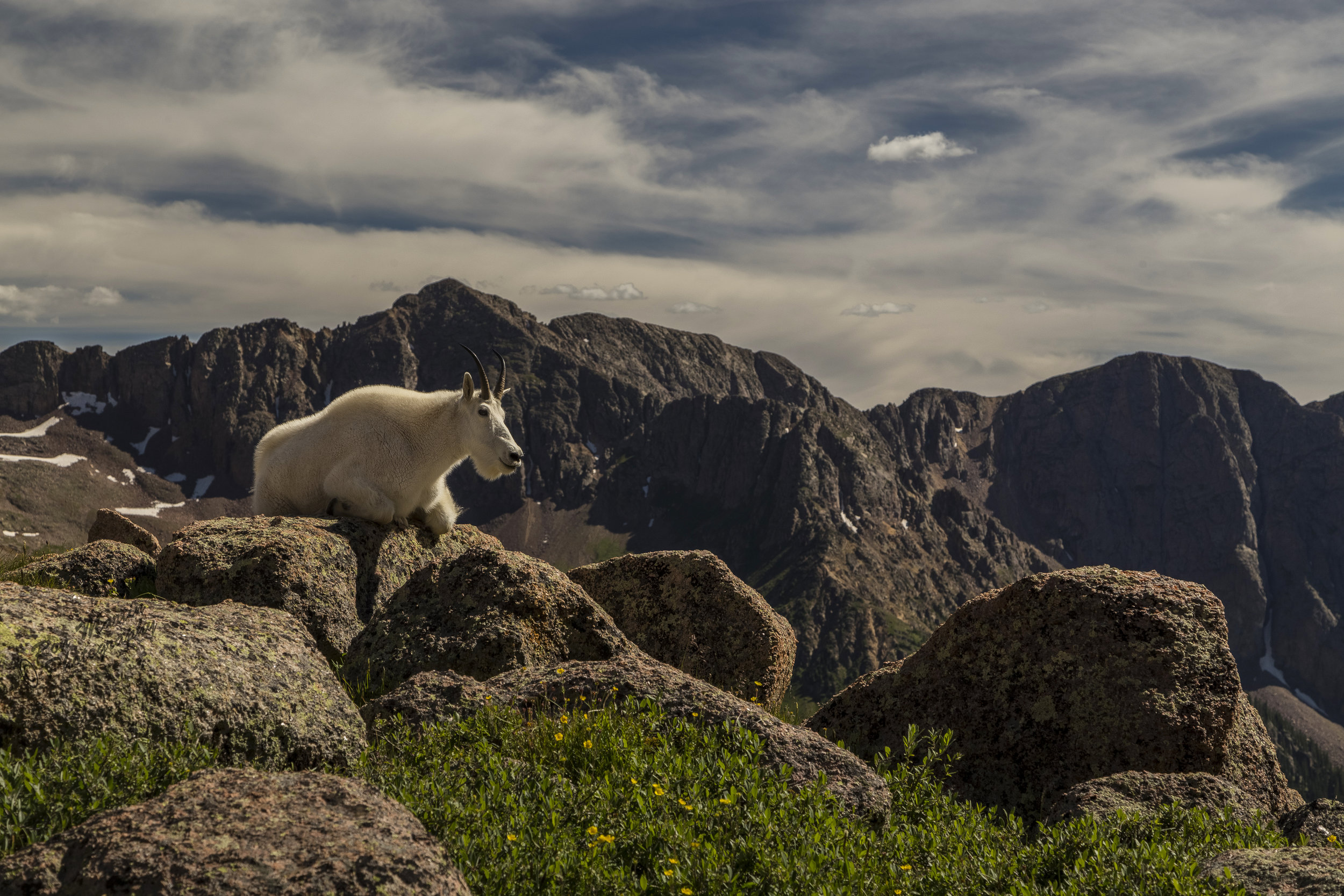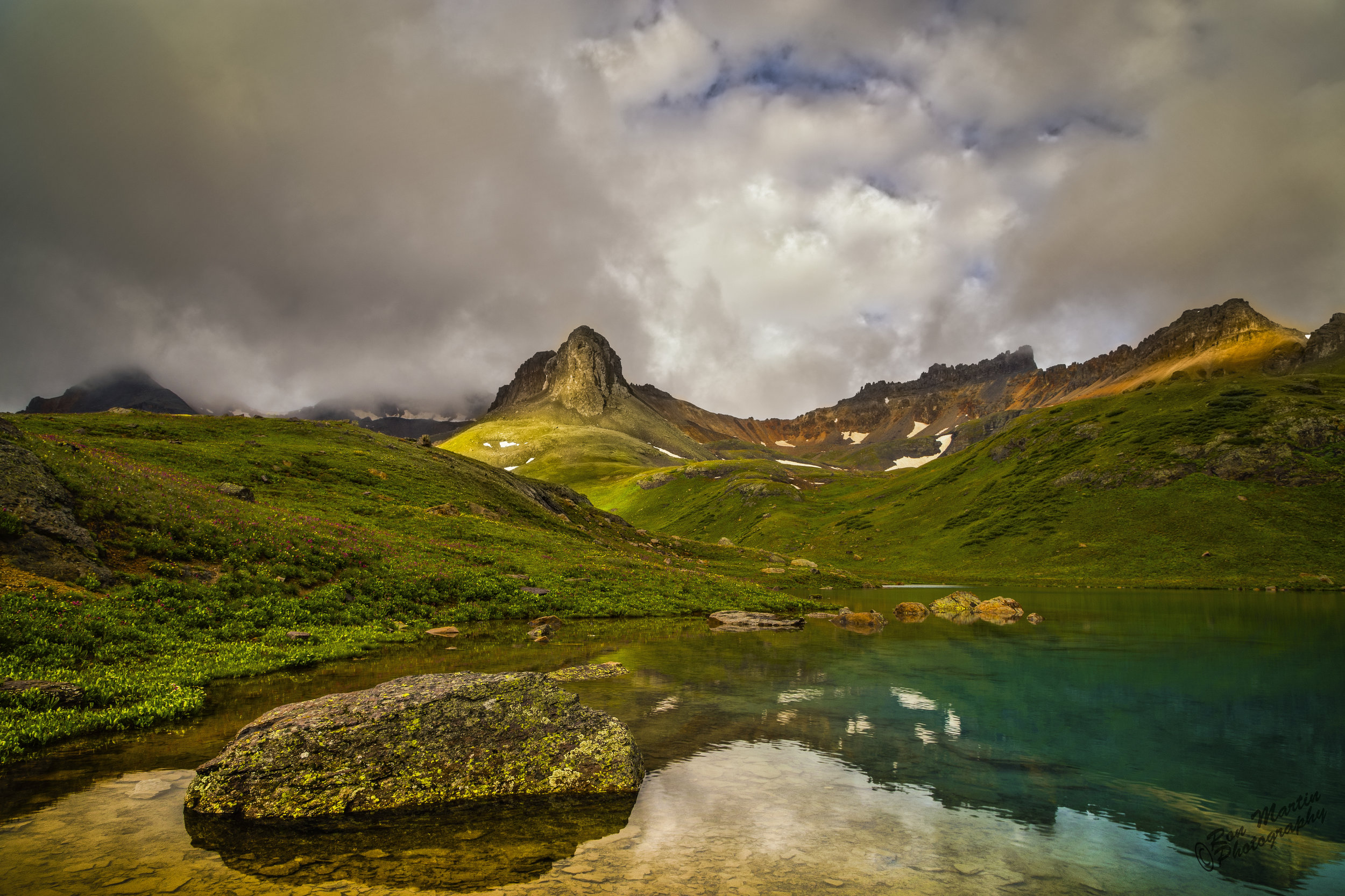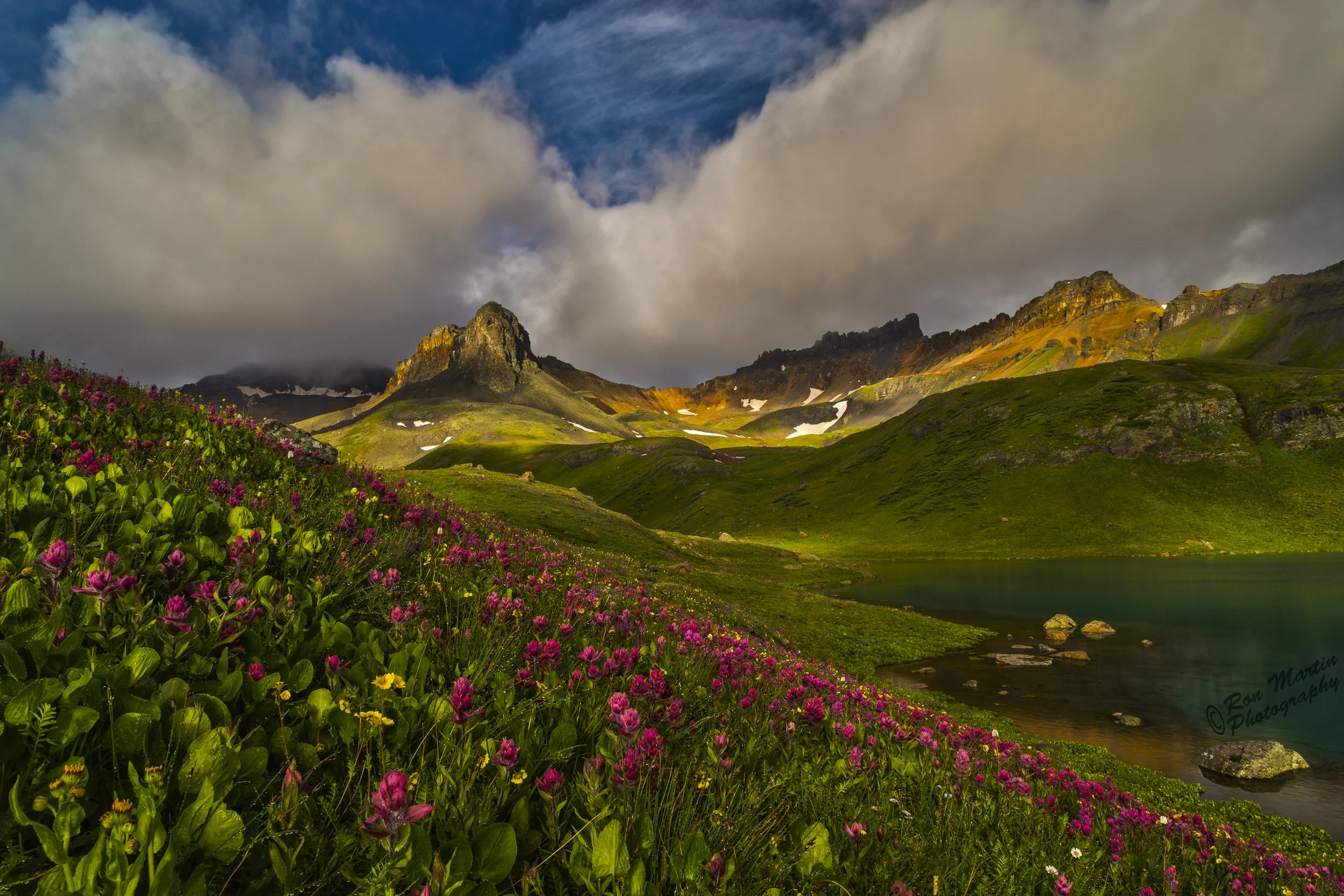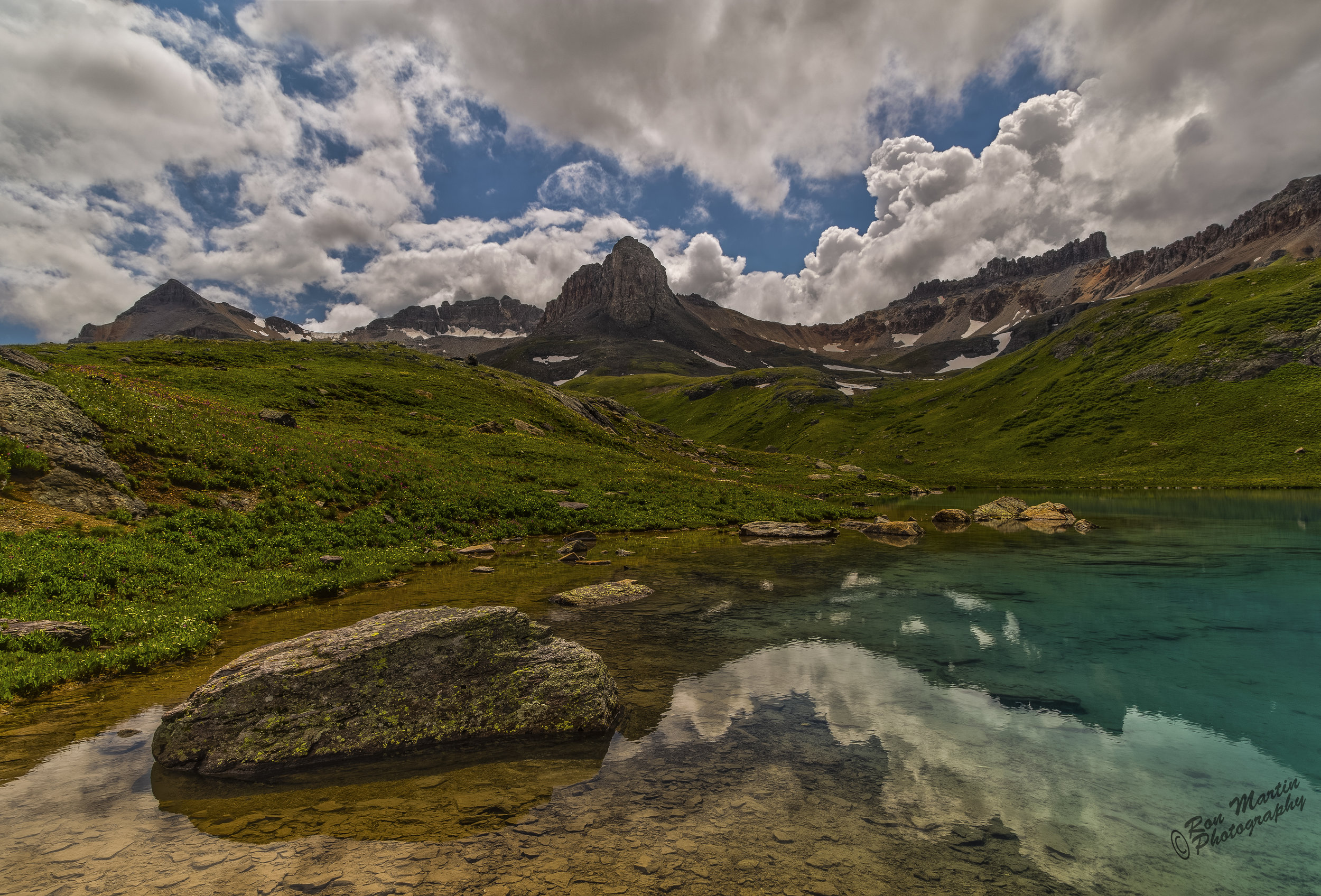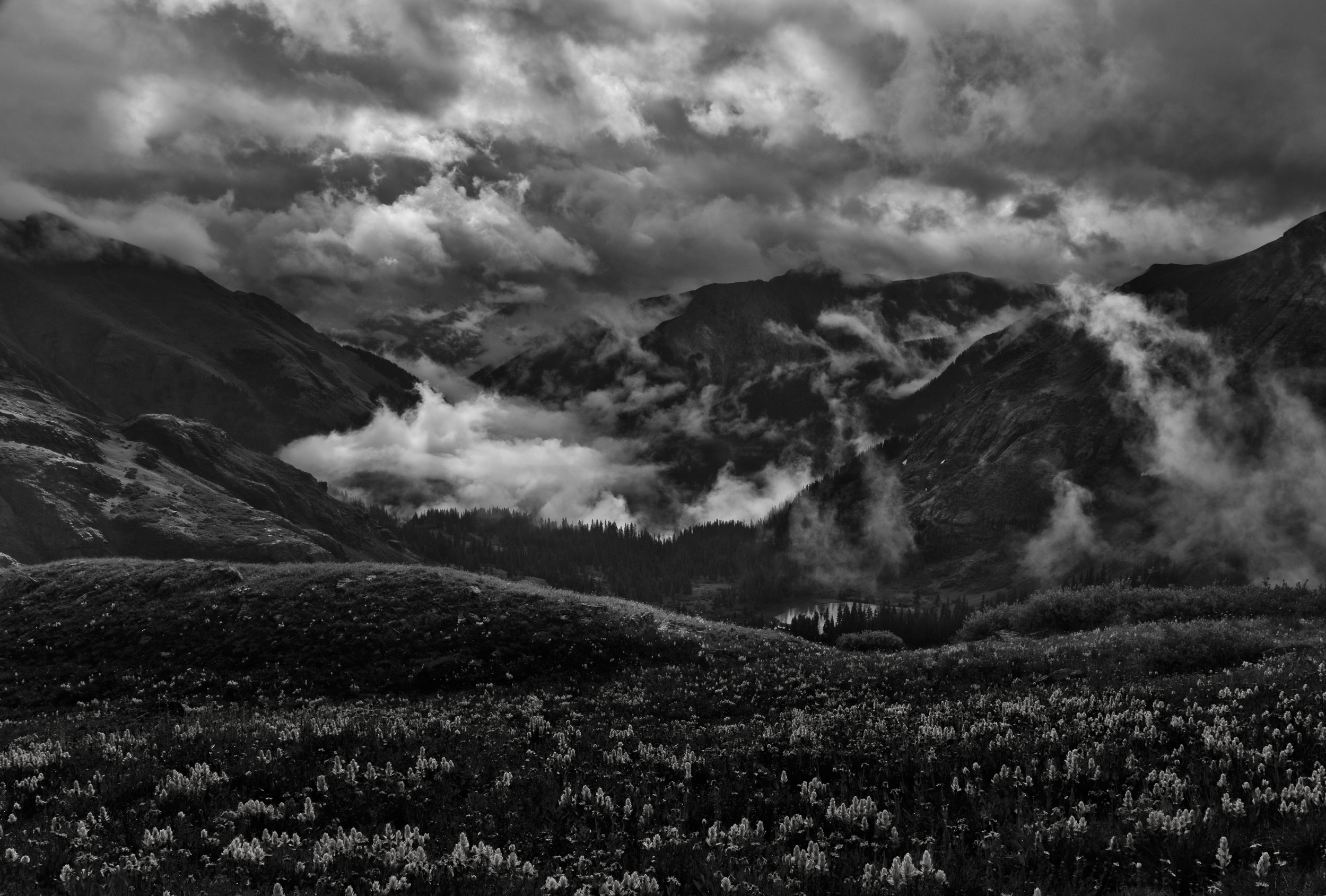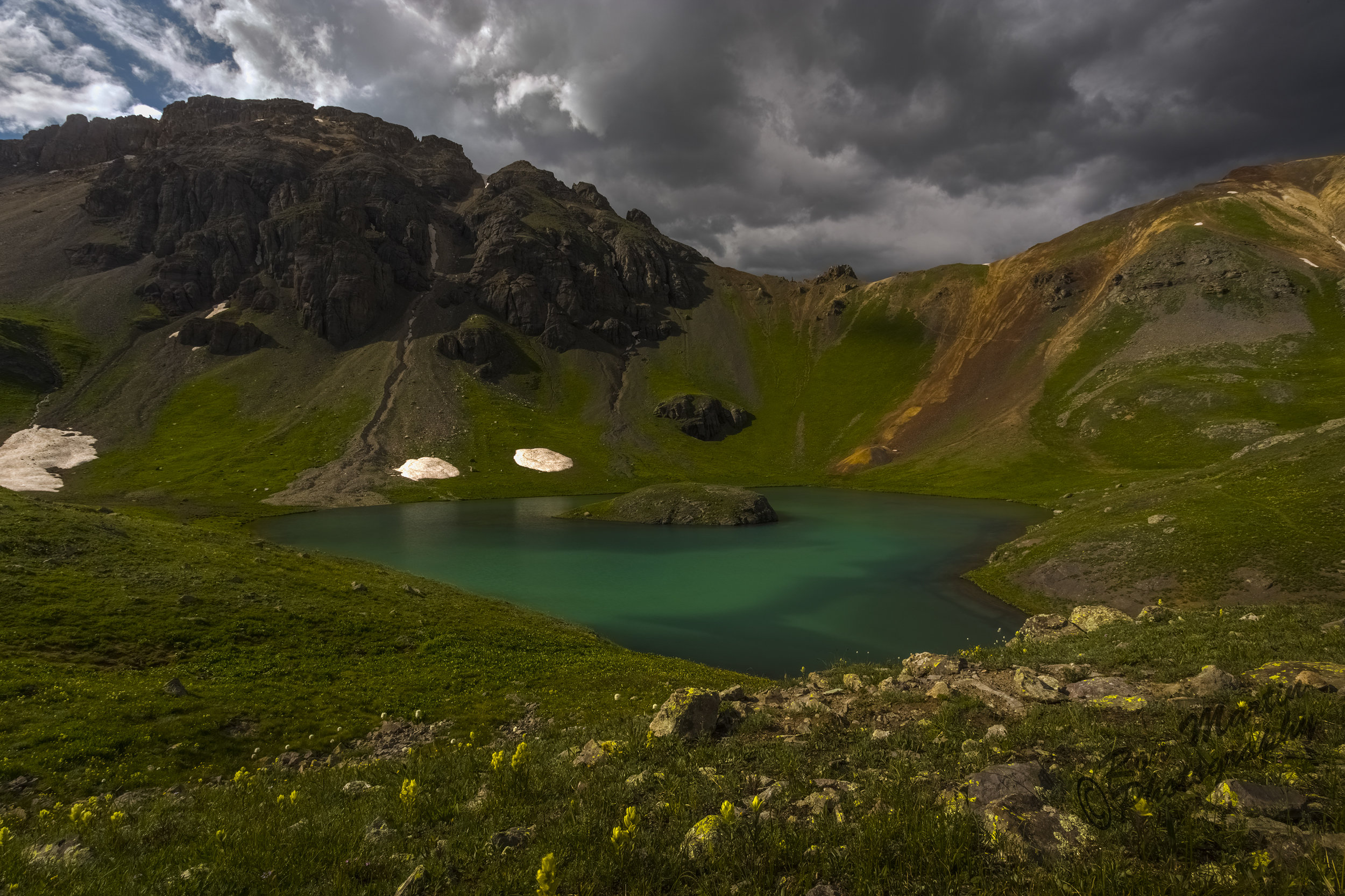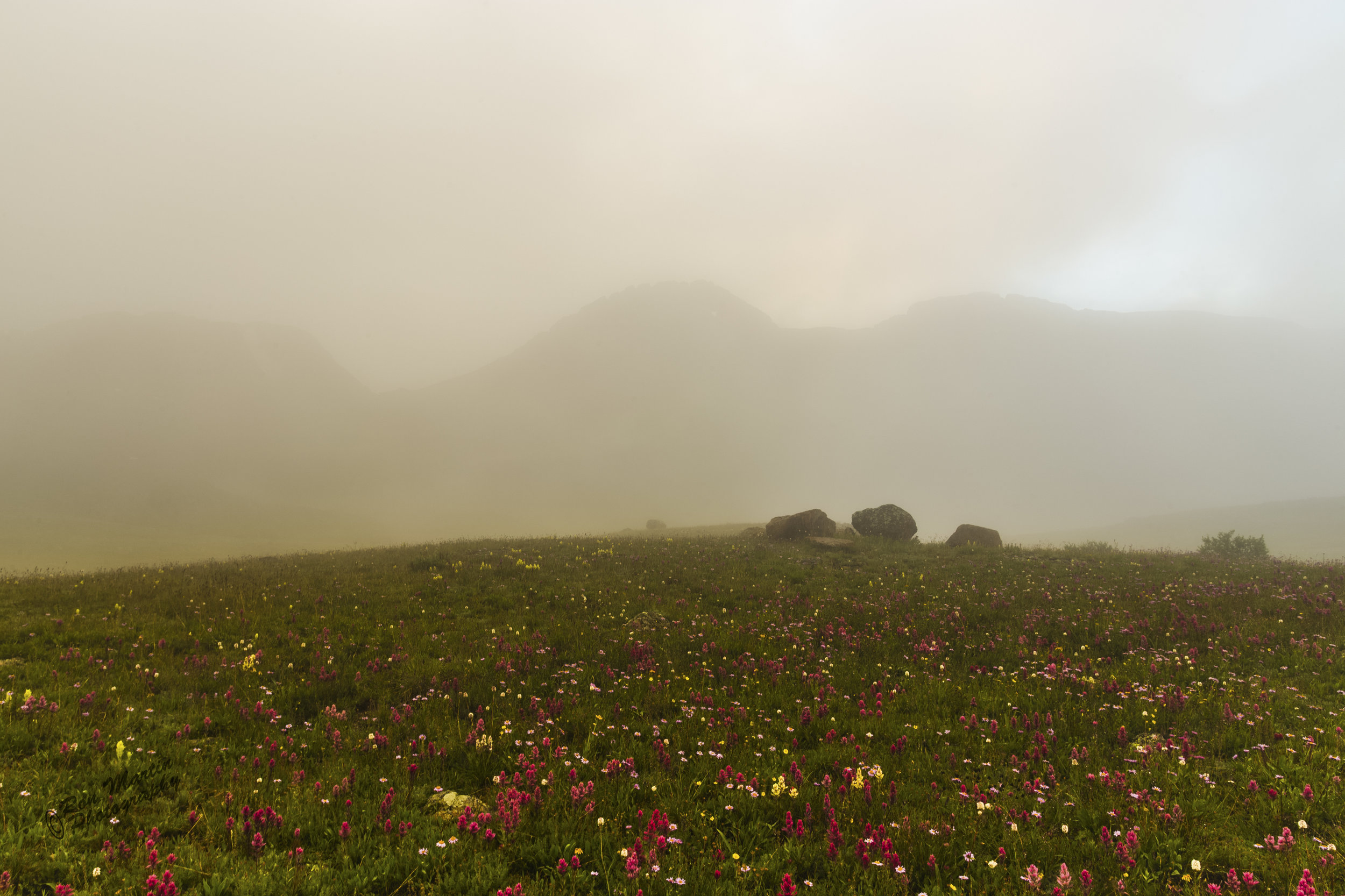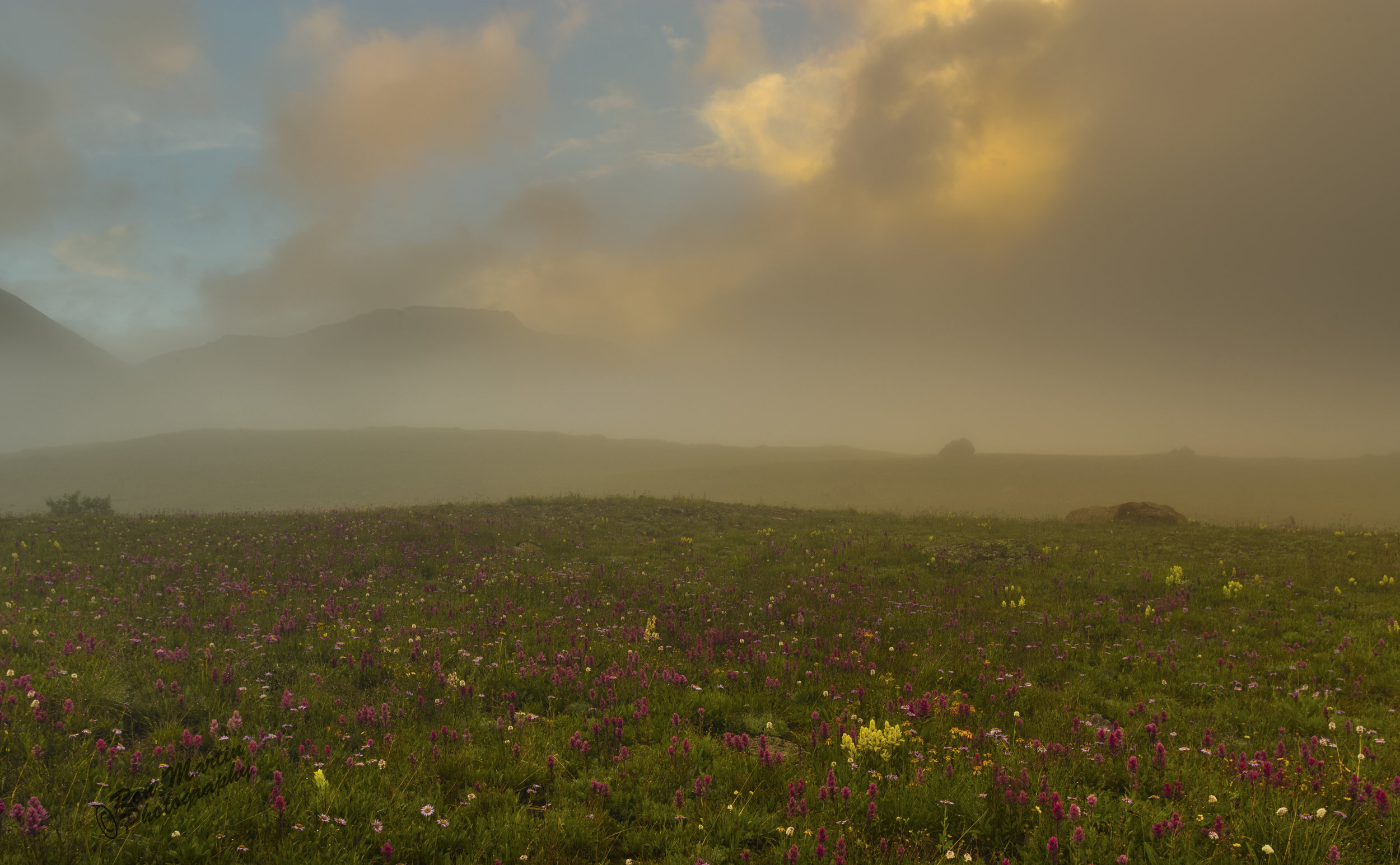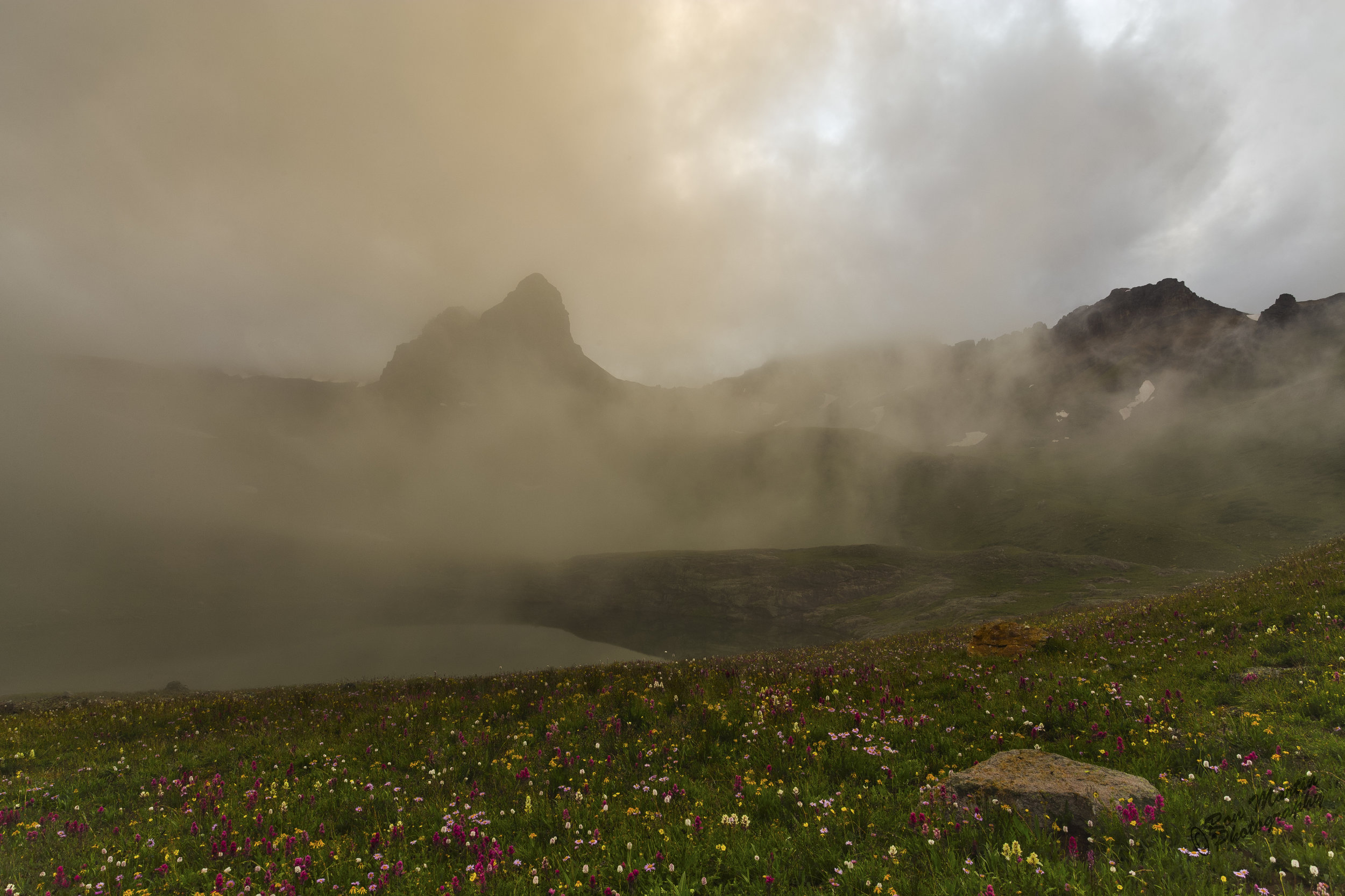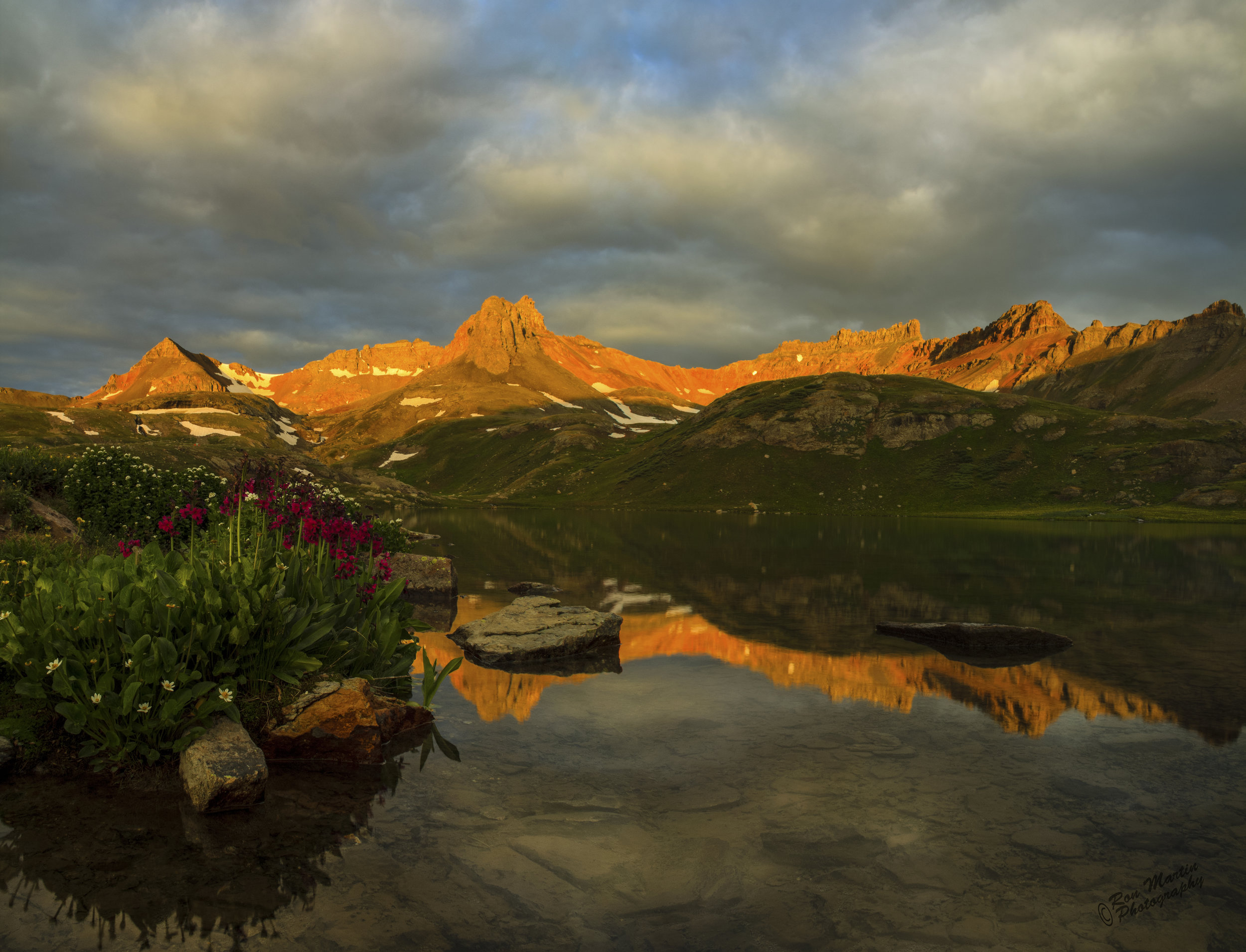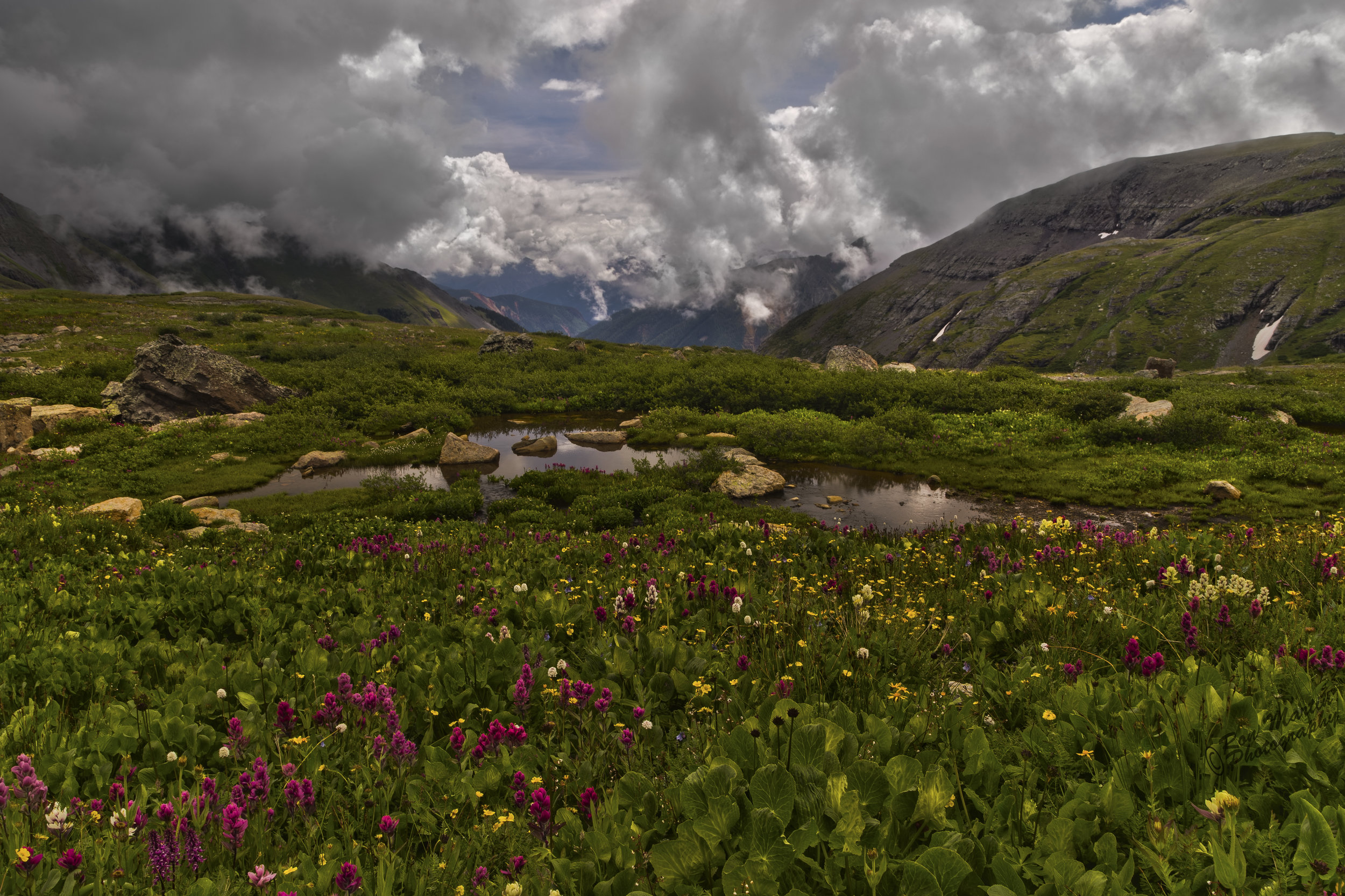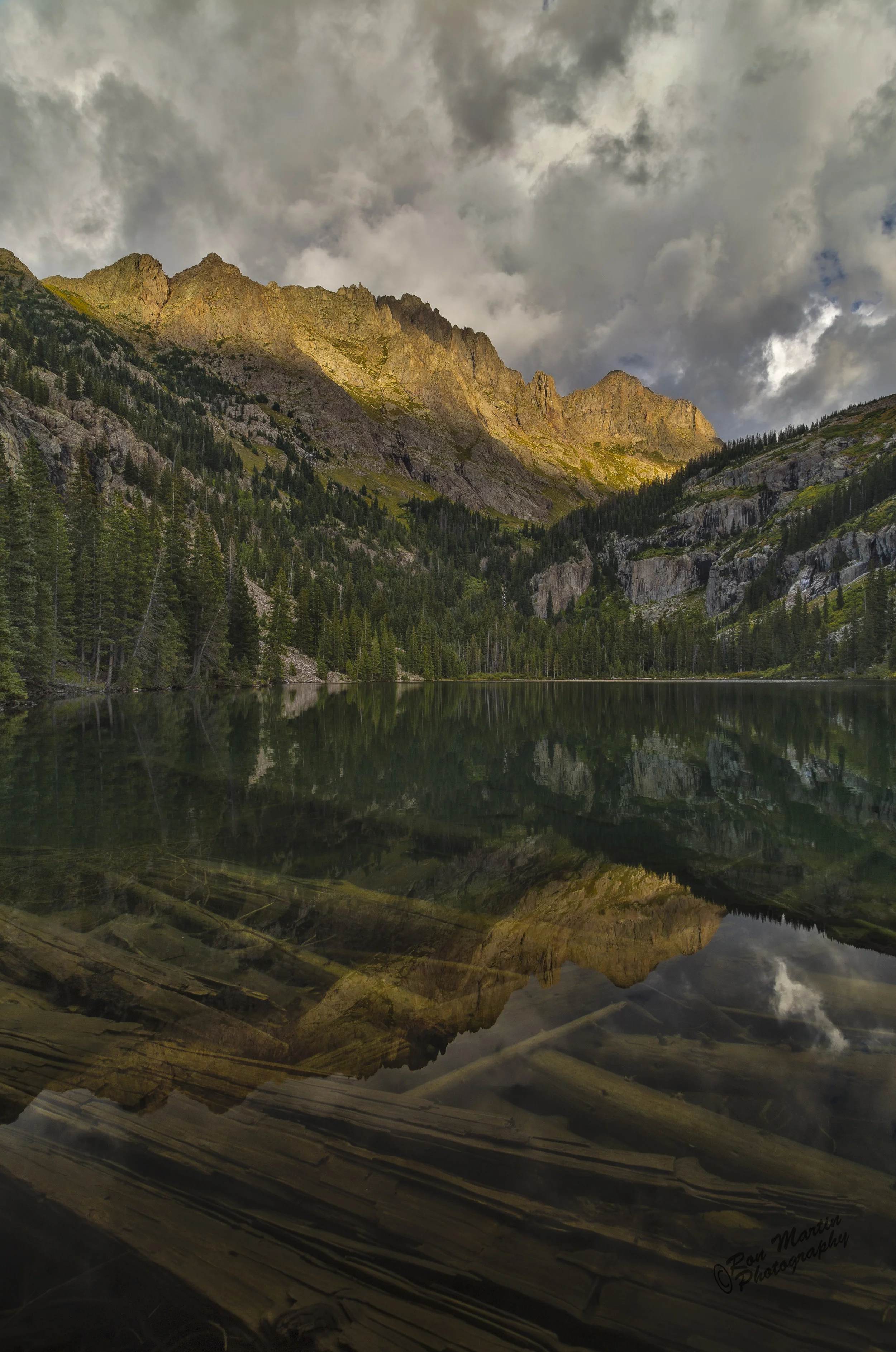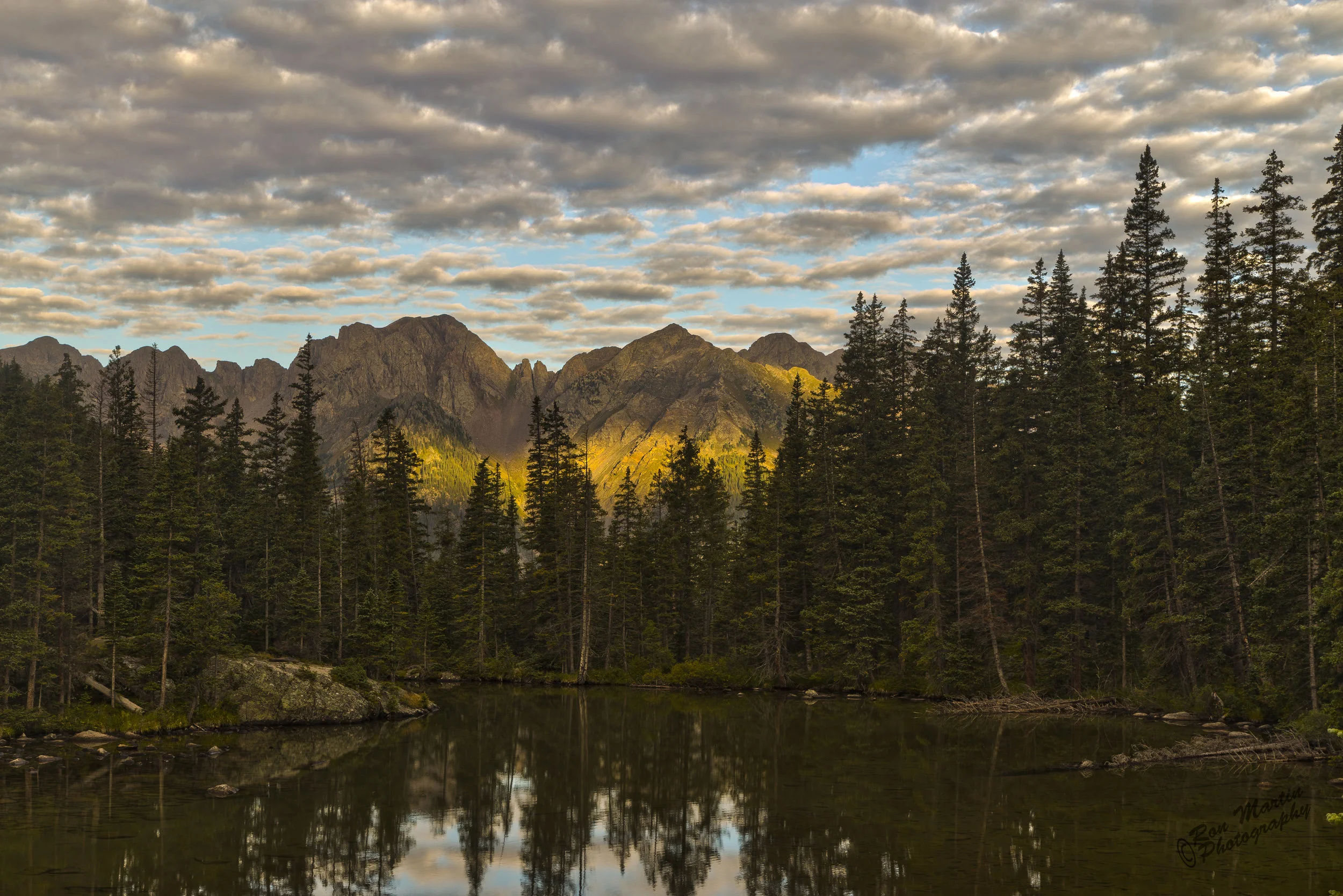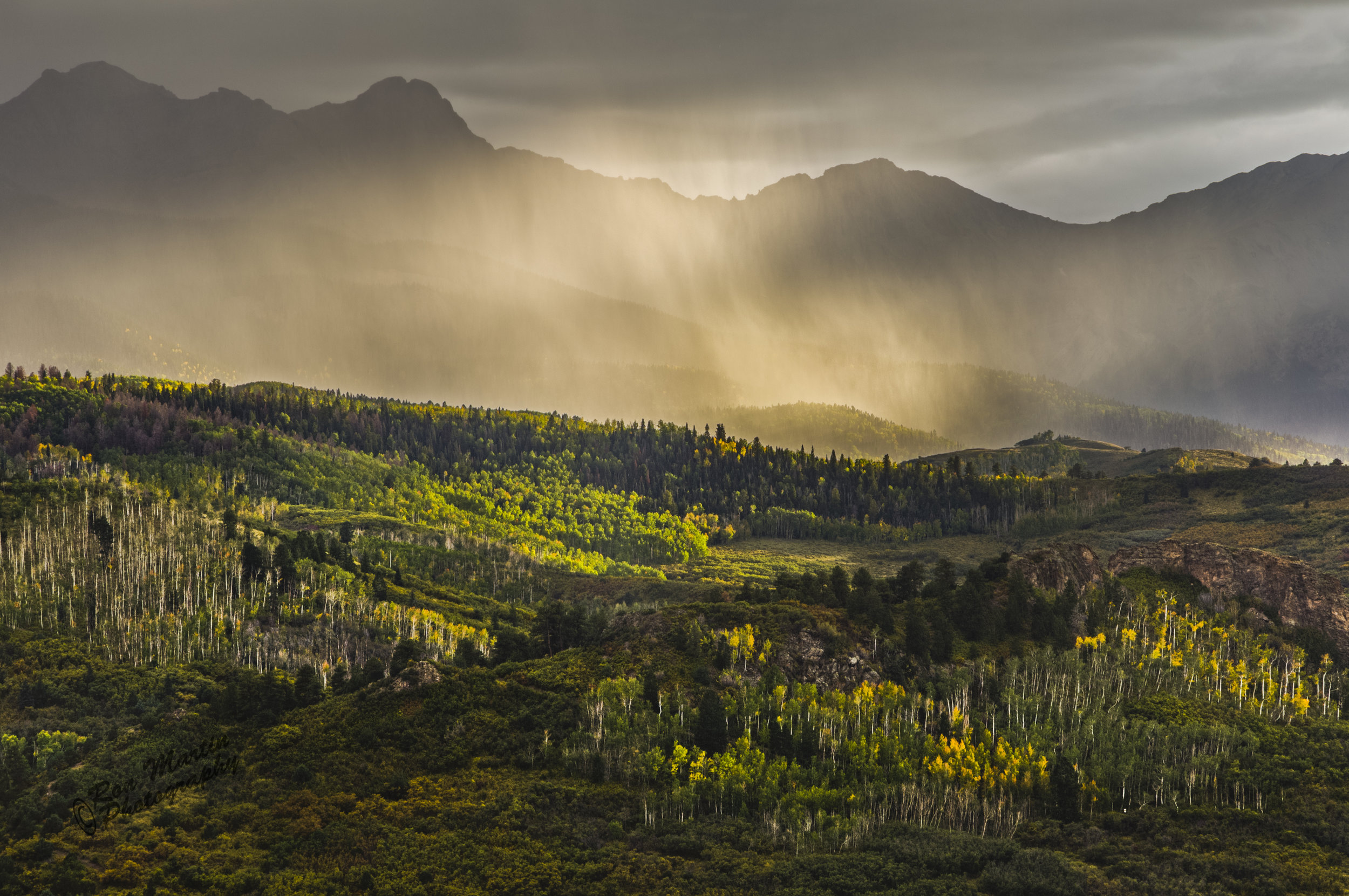All three of these basins are difficult to access and the odds are great that you would never see another person during your stay. Here are my accounts of my first trips to those locations, beginning with Noname Basin. (yes Noname is a one word name)
During my exploration of Noname Basin, I embarked on the seldom traveled and hard to detect, Jagged Mountain Trail. The epic scenery of these surrounding peaks in this region rivals some of our greatest National Parks. Peak Ten, Gray Needle and Knife Point are just a few that I could identify out of an entire range in this forked basin.
Noname Basin averages maybe five visitors a year. I guess, because it is more difficult to get to than neighboring Chicago Basin (a backpacking hot spot that receives a few thousand visitors every summer.) I journeyed to Noname Basin on two occasions in the summer of 2015. Once during mid summer, and then again just on the brink of fall. Though not quite as large as Chicago Basin, it has even more peaks to view, which provides more opportunities for cutting-edge landscape photography.
What amazes me is that with all the billions of people on the planet you can still find solitude in these places. And, even with the mild summers of Colorado, one of this state's greatest gems gets fewer visitors than the North Pole.
Peak Ten, Gray Needle and Knife Point gather more clouds on their summits than the other peaks in the immediate area. These peaks divide two great basins, Sunlight and Noname, east and west.
Sunlight Basin reigns to the east of these three peaks. While spending four days there in 2014, I realized that these lonely mountains see even less visitors. Again, most likely because of the daunting remoteness and inaccessibility. Peak Ten, Gray Needle and Knife Point, reside in the very center of the Needles Range.
To get to Noname Basin, I took the train from Durango to Needleton, put on my pack, then crossed the bridge over the Animas River. ( I avoided the popular Needle Creek Trail). I went left, which is north, to find the unencumbered trail to Noname Basin. The trail was so rarely used that I felt like I was pioneering a new one.
I did not see a soul until I returned to Needleton. I kept walking north, staying close as I could to the Animas River, and I knew I needed to cross four creeks before finding the entrance to Noname Basin. On the two miles along the Animas, I climbed over and under a multitude of fallen trees. I only occasionally encountered fragments of a trail. I stacked cairns to establish a trail I could follow on my return. Many times I was too far from the Animas to use it as a reference of my direction.
Finding the Entrance to the Noname Basin, it takes a turn east. A steep trail that fades after a few miles. I was searching, trying to fill in the blanks, or connect the dots. It is particularly bad the quarter mile before I came upon a trapper's cabin. But from there on, the route finding is much easier. The possible campsites are as pristine and beautiful as I could ever imagine.
On August 31, 2016, I boarded the Durango - Silverton Train. It's a two hour ride to the Needleton train stop. From this stop backpacker can access the trails to Chicago Basin, Ruby Basin or Noname Basin. I set out for Ruby Basin. Few ever go there and I had never been there.
The trail is a steep climb of 2,300 feet in just 1 mile. The next two miles is not so steep but many dead fall trees to climb over or walk around. The reward is a visit to Ruby Lake and a view of Animas Mountain beyond it. I camped at Ruby Lake one night before heading to Ruby Basin. There is hardly a trail to follow because so few people visit there. It's a 1000 ft climb and a one mile hike. It's a small basin with tall cliff faced peaks on both sides.
As I was studying to peaks, I notices a meadow in the saddle between Pigeon and Turret Peaks. It was about 1,200 ft above my location and maybe a good place to set up my camera. I decided it would be worth the climb.
The terrain consisted of thick willow shrubs and talus (large piles of boulders). With not much daylight left, I arrived there and was greeted by a herd of 18 mountain goats.
Mountain goats live above tree line so predators can't ambush them by hiding behind trees. They will go below tree line, as they do in Chicago Basin, if enough people are present to scare off the predators. For hydration, the goats prefer eating snow. Best of all, they are not usually bothered by humans. "Usually" as in don't approach them, let them wander near you. I never feed or touch them.
My plan was to stay one night in Ruby Basin and then return to Ruby Lake. As soon as nightfall arrived it began to rain hard. It rained all night and the next morning as I packed up, it was still raining. The rain stopped just before setting up camp at Ruby Lake. Everything I had was wet, but then the sun came out. I laid everything in the sun to dry. It looked like a yard sale.
Returning home wasn't so easy. The one mile of steep, I climbed two days earlier was sometimes too steep to descend without losing my footing. By the time I got to the train stop I looked like a kid that spent the day learning how to ride a bike and endured many falls. It was all worth it. Ruby Lake and Basin are amazing.
Sunlight Basin was the most difficult for me. Here is my account:
On July 8, 2014, the prospects of photographing Jagged Mountain compelled me to hike 16 miles to Sunlight Lake (12,033 ft.) by way of the Vallecito Creek Trail (8,000 ft.).
This long journey with a heavy pack required, two crossings of the swollen Vallecito Creek, three crossings of Sunlight Creek, and route-finding in the inaccessible last 6 miles of the steep Sunlight Creek canyon.
I began at the trail-head before dawn.
Four miles in, I arrived at the first crossing of the Vallecito Creek trail and waded through the creek in waist high depths through fast moving water. Luckily, my 55 lb. pack planted my feet on the rocky bottom, preventing me from being swept away.
Slipping on the rocks and floating down river would destroy all my equipment in the least. The worst I tried not to imagine.
Still wet from my creek crossing, I met two rangers that asked where I was headed.
“Sunlight Lake,” I said.
“The trail to Sunlight Lake was taken out by an avalanche years ago.”
“I’m aware of that,” I replied. Despite their discouraging looks and forewarning, I continued on with my trek.
Just when I was about dry, storm clouds erupted and thunder ignited, threatening me with proximal lightening strikes.
No signs indicated which creek merging into the Vallecito Creek was Sunlight Creek. Relying on instincts, I followed a creek into a heavily wooded canyon, and soon encountered thousands of fallen trees in the wake of the avalanche’s path years ago.
I climbed and slipped over piles of wet logs in this half mile wide graveyard of aspens.
This scarred, tarnished earth provided no reprieve, so I had to use the creek as a trail, cross stepping an area of car-sized talus, and then a flat, swamp-like terrain that I would reluctantly call the easiest part so far.
The relentless rain of the entire day made me imagine what it might have been like to be a 19th century miner or trapper, and with those thoughts of their outdoor hardships, I made camp in the failing light, slightly disappointed I did not reach Sunlight Lake.
At sunrise I discovered that after my arduous journey I had pitched my tent only 200 yards from Sunlight Lake. Although my feet and legs were haggard, I stayed by the peaceful, previously inaccessible lake, admiring the scenery and recovering until I could return home the same way I came.
I would not recommend this trek to anyone even though the views of Jagged Mountain and Sunlight Lake were stunning.

